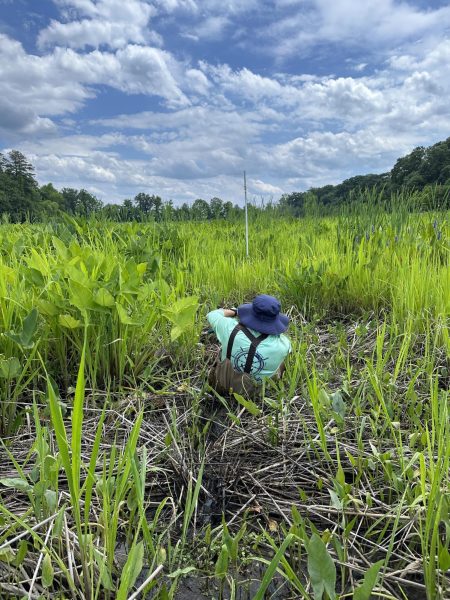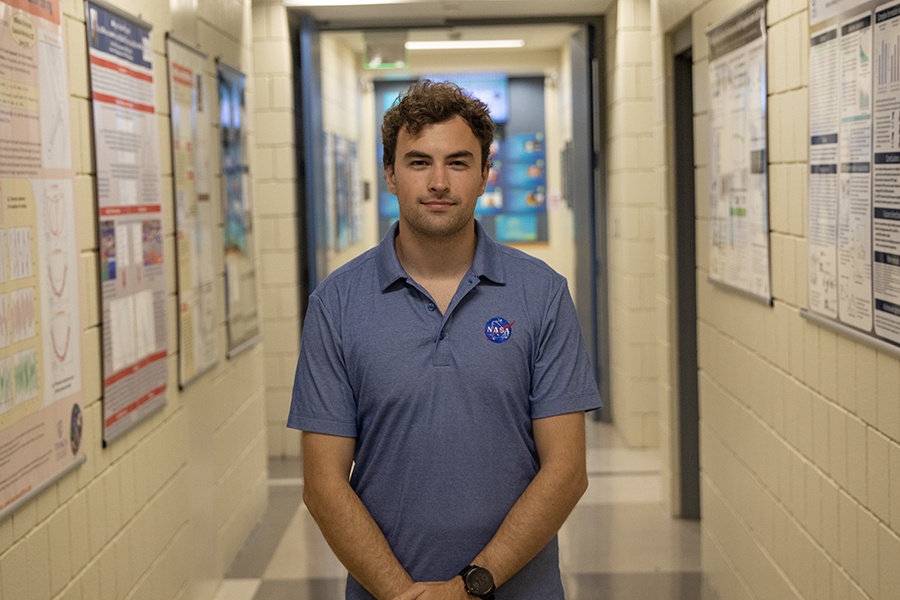Ithaca College senior Matt Weil, a physics major, spent eight weeks of his summer doing intensive wetland ecosystem research through the NASA Student Airborne Research Program.
The program was a collaboration between various agencies, including the Environmental Protection Agency, the United States Department of Agriculture, the Naval Research Labs and the United States Army Corps of Engineers. The program has existed for 15 years on the West Coast, but 2023 was the program’s first year on the East Coast.
Students primarily used resources from the NASA Langley Research Center in Hampton, Virginia. The program also worked with resources from the NASA Goddard Space Flight Center, Dynamic Aviation and other universities and colleges across Virginia and Maryland.
Weil said that in the first week of the program, students had an orientation and were taught how to use the scientific equipment that they would be working with over the summer. The next two weeks focused on a field campaign, where students would go on daily flights using the equipment to collect information that would influence their independent research projects.
“Once you have all that data, you’re not dictated as to what research question you want to do,” Weil said.
Robert Swap, associate division director for Mission Planning in the Earth Sciences at NASA’s Goddard Space Flight Center, is the program director for SARP East. Swap said that giving students the freedom to choose their research topic was a critical aspect of the program.
“Some internships are kind of like a paint-by-number,” Swap said. “What I wanted to do was create more like an arts and crafts store.”
Swap said the arts and crafts store analogy sets the context for their research, as students were given the equipment and facilities needed to take their research in any direction relating to the Chesapeake Bay area rather than following a set of instructions.
“The Chesapeake Bay was a great living laboratory for such an experiment because you have all these different things coming together,” Swap said. “It’s a tightly coupled human-natural system and it’s undergoing change.”
Students were initially split into one of five research groups before developing a research question with a faculty adviser. Weil’s adviser was Christopher Gough, associate professor in the Department of Biology at Virginia Commonwealth University.
“We worked closely with his lab group when we were doing field measurements, but we didn’t have to necessarily stick to what his research was,” Weil said.
Weil primarily built upon the research that he has done at Ithaca College with Eric Leibensperger, assistant professor in the Department of Physics and Astronomy, who encouraged him to apply for SARP. The research they did was focused on methane emissions and how they impact the atmosphere and various ecosystems.

(Courtesy Robert Swap)
According to NASA, methane is the second-largest contributor to global warming after carbon dioxide, but combating methane emissions can have a more immediate impact on the environment compared to other greenhouse gasses.
“We really focus on methane because we’re interested in near-term climate change,” Leibensperger said. “What we do with methane will cause immediate changes. We really need to understand the sources of where methane is coming from and that’s what Matt was doing over the summer.”
Leibensperger and Weil worked together in 2022 and 2023 to locate an unidentified source of methane emissions that had not been reported by either the EPA or the New York Department of Environmental Conservation, linking it to a local mining operation.
Leibensperger said Weil took on ownership of the projects that they worked on when Leibensperger was not able to give as much attention to them when he was away from campus for paternity leave.
NASA reports that methane emissions can come from various sources, including landfills, agriculture, fossil fuels and wetland ecosystems, but Weil said wetlands are often not given much focus.
“It’s good to get a general sense of what the wetlands are producing versus what other ecosystems and ecological processes are also producing,” Weil said.
Weil continued this research through SARP, studying where methane emissions come from in wetland ecosystems using field measurements as well as data collected from aircrafts and satellites.
Weil primarily used multispectral imaging to gather data, which is data collected from specialized cameras that measure the reflectivity of a certain point on the ground. This information was used to map out the entire wetland, which was around 250 acres.
The cameras collected 120 million pixels worth of data from the wetland, with each pixel having six to seven different data values that he analyzed.
“I really enjoy flying drones and attaching expensive scientific equipment to them,” Weil said. “I like being able to use technology that wasn’t around 20 to 30 years ago and getting a better sense of what’s actually happening on our planet.”
At the end of the program, students were split into random groups to put together an interdisciplinary research proposal using aspects from each of their individual research projects, which they presented to about 120 people on the last day.
Swap said Weil conducted strong research, which will be applicable to ecosystems beyond wetlands. Researchers can use that data to determine sources of methane emissions in forests and other environments. Swap also said that giving students resources used in various fields of science allows for a more complete understanding of their research subjects.
“I really believe in transdisciplinary education,” Swap said. “We need students who think differently and start to query the world differently than we’re currently doing. We have to be ready to take on the problems of tomorrow.”









Bea Lima • Nov 26, 2023 at 7:46 pm
Great job Matt and Sebastian with writing the article.